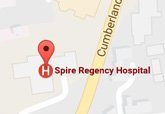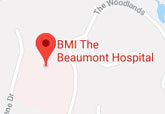Transforaminal Lumbar Interbody Fusion
Transforaminal lumbar interbody fusion (TLIF) is a type of spinal fusion procedure in which bone graft is placed between the affected vertebrae in the lower back (lumbar) region through an incision on the patient’s back.
Indications:
Based on the spinal condition, age, activity levels, and the medical history of the patient, the surgeon may recommend TLIF as a treatment option.
It is indicated in the following spinal instability conditions:
- Degenerative disc disease (damaged disc)
- Spondylolisthesis (slippage of one vertebra on another)
- Spinal stenosis
The common symptoms associated with lumbar spinal instability are pain, numbness, and muscle weakness in the lower back, hips and legs.
Procedure:
The basic steps involved are as follows:
- A small incision is made in the skin on your back over the affected vertebrae
- Muscles encircling the affected spine are retracted to gain accessibility to the spine
- Lamina covering the vertebra is removed to view the nerve roots
- Facet joints (structures that connect the vertebrae to one another) may be undercut or trimmed to provide more space for the nerve roots
- Nerve roots are moved away to remove the disc material from the anterior region of the spine
- Bone graft is inserted between the vertebrae
- Screws and rods are fixed to stabilize the spine
- Soft tissues are re-approximated and the incision is closed
Recovery:
Patients who have undergone TLIF surgery are usually discharged on the same day, but in some cases, hospital stay may be extended. Most of the patients observe immediate improvement of some or all of their symptoms but sometimes the improvement of the symptoms may be gradual.
Your surgeon may recommend few specific post-operative instructions for a fast and better recovery. Generally, patients may return to their routine activities within weeks after surgery.
Risks & complications:
The possible complications associated with TLIF include:
- Infection
- Nerve damage
- Blood clots
- Blood loss
- Bowel or bladder problems
The primary risk of TLIF is failure of fusion of vertebral bone and bone graft which may require an additional surgery.
Please consult your physician for a complete list of indications, warnings, precautions, adverse effects, clinical results and other important medical information that pertains to TLIF procedure.




